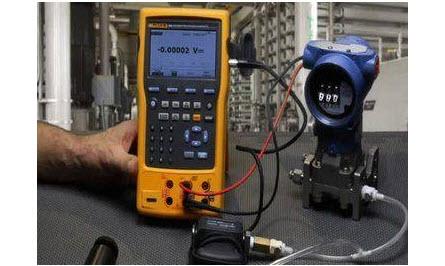Important Calibration Tips for Pressure Sensors
Brian Craig
February 18, 2019
Pressure transducers are used in various industries to measure the pressure of a given fluid and stop it from expanding. Differential pressure transducers are one of the important types of pressure transducers widely used across industries to measure the difference in a liquid’s gauge pressure when flowing through a pipe. They are also used to measure the difference between the pressures of two fluids. Owing to their heavy uses in different industries, it is necessary to perform pressure sensor calibration. This post discusses the importance of calibrating sensors in the transmitters, and tips for calibration.

Importance of Calibrating Sensors
Calibration is performed on a device to standardize measurements and reduce the manual error and the difference between the measurement outputs by two or more devices. Sensor is an important component of a pressure transmitter and sensor calibration is essential to bring in accuracy.
A sensor is affected by its surrounding physical factors. This means a pressure transmitter may be affected by environmental conditions, as well as media where they are used. So, for a sensor to give the most accurate output, calibration is necessary. It is also essential that a sensor detects the minutest of changes.
We cannot control a sensor physically; however, we can definitely set the parameters, for instance pressure range, based on our requirements and then observe the sensor output. So, while you can upgrade the sensor with the necessary hardware, devising an in-house calibration system in your organization would bring in better control and accuracy.
How to Calibrate Sensors
SI-accepted units are extremely important when calibrating any device such as a sensor or differential pressure transducer. This is because standard references are a must to get accurate readings on any device. Here are some tips to set standards based on your requirements.
- Set standards according to an already well-calibrated accurate sensor or transmitter.
- A crucial factor is to align your standards and formulae to the devices when calibrating to get the most accurate output.
- Sensors tend to give offset values due to slightly higher or lower curves than the ideal linear output. This can be corrected with various calibration methods such as single point, two point, and multi-point.
- Following the standards set by the National Institute of Standards and technology (NIST) makes the whole process of calibration easy. Using a device set according to the NIST standards to calibrate makes it even easier.
- Almost always, there would be more than one ways or methods to approach calibration. You should choose the one suitable for you and depending on the amount of accuracy required.
- To some extent, you can calibrate almost all electronic devices and sensors in-house as long as your calibration methods are set and standardized, else seeking professional help is recommended.
It is crucial that the transmitters are calibrated accurately. It is equally important to check the accuracy of your devices’ output at least once in a year. You can seek the help of the manufacturer or supplier to ensure the accuracy of calibration. The Transmitter Shop (TTS), a leading supplier of branded pressure transducers, provides calibration services using SI-traceable units.
Related Posts
- Important Calibration Tips for Pressure Sensors
- What is RTD Sensor and How Does it Work?
- What is a Thermocouple and How Does It Work?
- Why Platinum is a Preferred Choice in RTD Sensors?
- How to Choose the Right Exhaust Gas Temperature Sensor for Your Engine
- Role of Sensors in the Food Processing Plant
- How Can Greenhouse Gas Emissions Be Reduced?
- Understanding Electrochemical Detection: Principles, Techniques and Environmental Application
- Furnace Flame Sensor Faults: Everything You Need to Know for Safe Operation
- Complete Hydrogen Gas Safety and Measurement Solutions
- Key Sensors for Monitoring Emissions in Wet and Dry Scrubber Systems
- What is a Mass Flow Meter? Working Principles and Key Benefits
- Electromagnetic Flow Sensors for Abrasive and Corrosive Fluids
- Pressure Sensing Sensor Modes of Measurement: Key Differences and Benefits
- Flow Measurement Challenges in Subsea Operations
- Pressure Sensing Sensor Modes of Measurement Key Differences and Benefits
- Electromagnetic Flow Sensors for Abrasive and Corrosive Fluids
- Mass Flow Meters and Their Working Principles
- Best Explosion Proof Switches for Hazardous Environments
- Best Explosion Proof Switches for Hazardous Environments
- Furnace Flame Sensor Faults Everything You Need to Know for Safe Operation
- Pneumatic Pressure Controllers: A Safe Choice for Hazardous Areas
- A Practical Guide to Vacuum Measurement and Operation
- Understanding Electrochemical Detection: Principles, Techniques and Environmental Application
QUICK ENQUIRY







